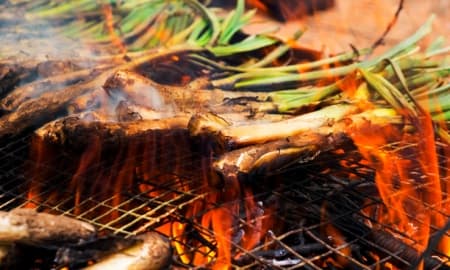
Gastronomy in Barcelona
To talk about Barcelona's cuisine, it is essential to understand its historical and geographical context. Catalonia played a leading role in the conception of an exquisite gastronomic menu based on its mountain topography and being one of the best and most populated coasts of the Mediterranean.
Just as the city is splendid in offering an abundant menu that feeds on globalization and an extraordinary multitude of flavours thanks to its port, its rural area abounds with traditional and artisan cuisine.
The first Spanish cookbook
To get an idea of the enormous gastronomic legacy that the city of Barcelona possesses, it should be noted that this is where what is considered the first cookbook in Spain was published. This happened around 1477 by Ruperto de Nola.Another important recipe book, entitled La cuinera catalana, was published in 1835. It was written by an anonymous author and, for the first time, described in detail a large part of the traditional Catalan gastronomic preparations as well as stews and select dishes. It also included a glossary of restaurants, some of which still exist, such as Los Caracoles and the 7 Portes.
It should be noted that Barcelona has stood out for centuries as one of the Spanish cities with the largest number of both traditional and international restaurants. This has greatly helped its cuisine reach very high gastronomic levels.
The taste of Barcelona
The climate and geography of Barcelona have worked in its favour to produce excellent ingredients that are the true secret behind its flavour and its great popularity.
From the top of its mountainous area to its coasts, Barcelona has maintained an exotic and delicious mix of flavours known as "sea and mountains". This translates into sauces, stews and excellent dishes.
The wheat from the region is used to make the popular and famous “cocas”, such as the one from recapte or the one from Montserrat. In addition, wheat composes its country bread and the exquisite “pantumaca”, which is very popular in the province and to which is added olive oil, tomato and salt.
The wheat from the region is used to make the popular and famous “cocas”, such as the one from recapte or the one from Montserrat. In addition, wheat composes its country bread and the exquisite “pantumaca”, which is very popular in the province and to which is added olive oil, tomato and salt.
Escalivadas and calcots
Without a doubt, the true culinary secret of Barcelona is found in the “escalivada” and the “calcots”.Escalivadas are exquisite salads based on roasted regional vegetables, including eggplant, tomato, onion and especially red pepper, which are roasted, cleaned and cut into strips. Then, generous amounts of extra virgin olive oil and salt are added.

On the other hand, calcots are among the rural dishes that are most consumed during the winter months due to their large number of calories.
This dish is prepared with tender and long chives, wrapped in newspaper and burned over wood, which gives it a delicious flavour between smoky and sweet.
A good calcot must be accompanied by bread, rosemary, vinegar, olive oil, peppers, almonds and hazelnuts, and red and roasted tomatoes.
This dish is prepared with tender and long chives, wrapped in newspaper and burned over wood, which gives it a delicious flavour between smoky and sweet.
A good calcot must be accompanied by bread, rosemary, vinegar, olive oil, peppers, almonds and hazelnuts, and red and roasted tomatoes.
Delicious sweets
Barcelona's confectionery is closely linked to saint festivities. For example, on All Saints' Day the traditional “panellets” are offered. These are divine sweets made of nougat and marzipan.Another example of its select confectionery includes its desserts made from chocolate. This speaks volumes about how it has fuelled its flavours thanks to the encounter of cultures from other regions of the world.
Other sweets are “tortells”, sponge cakes and “braç cremat”, which is a kind of Swiss roll.









